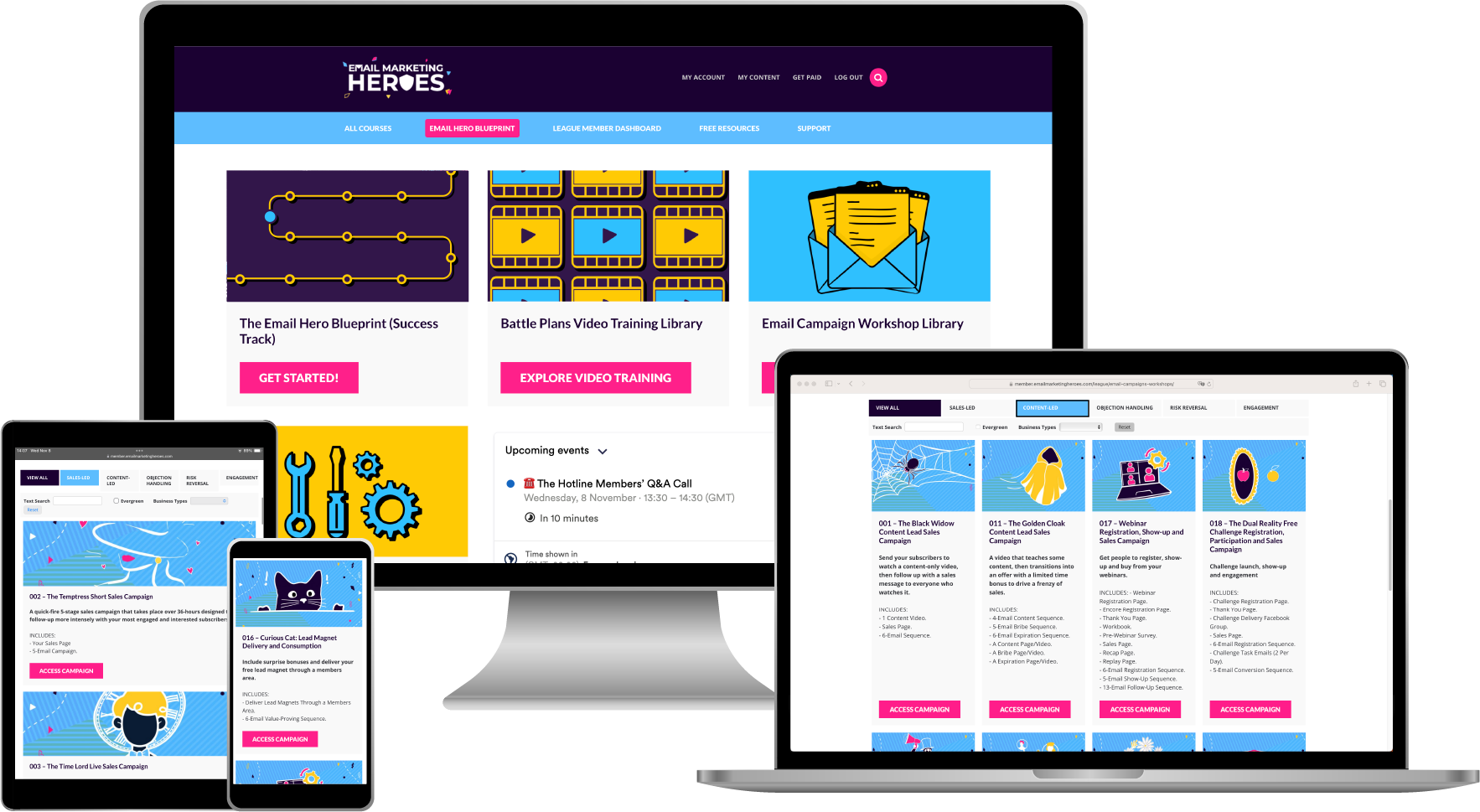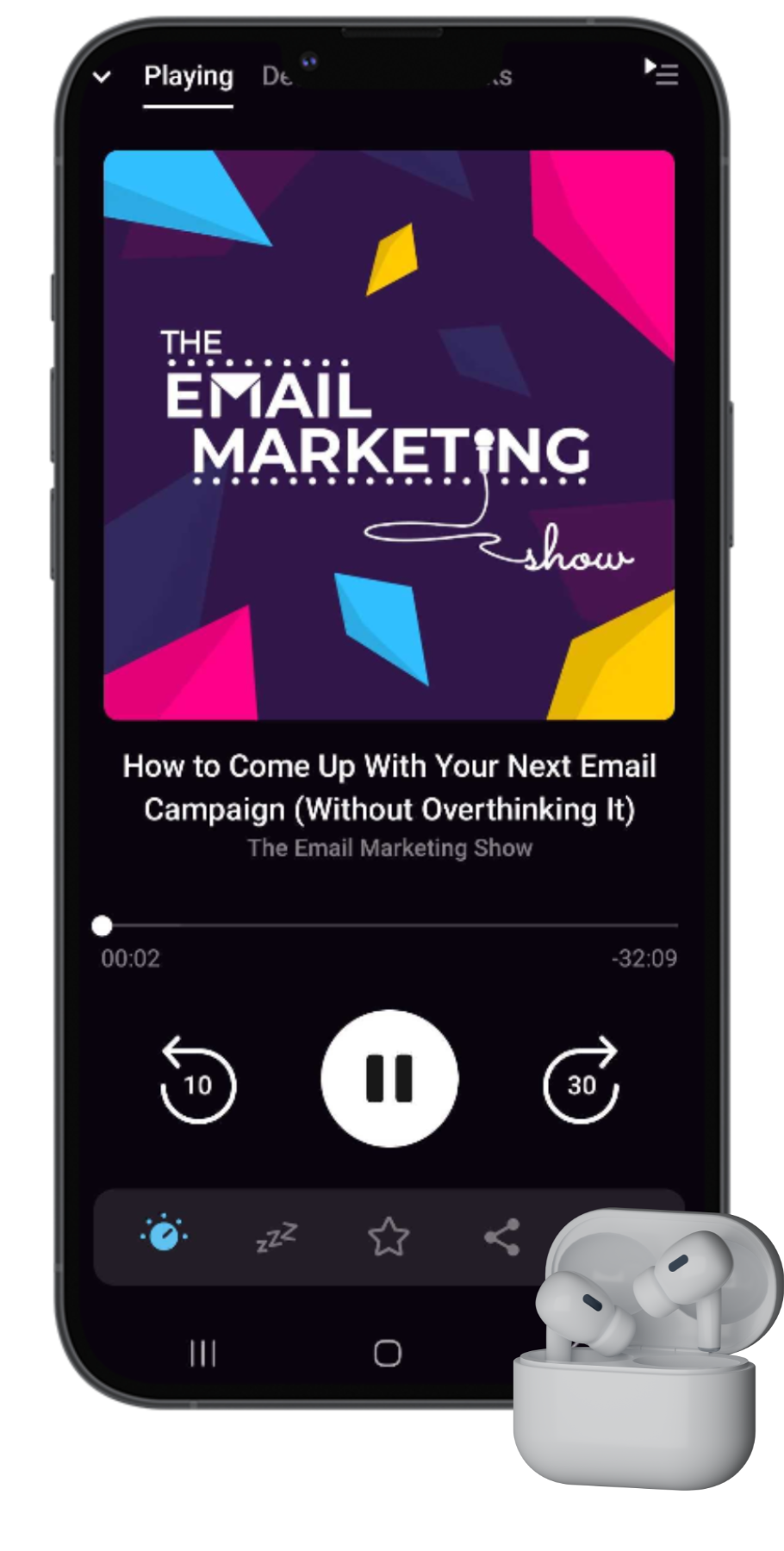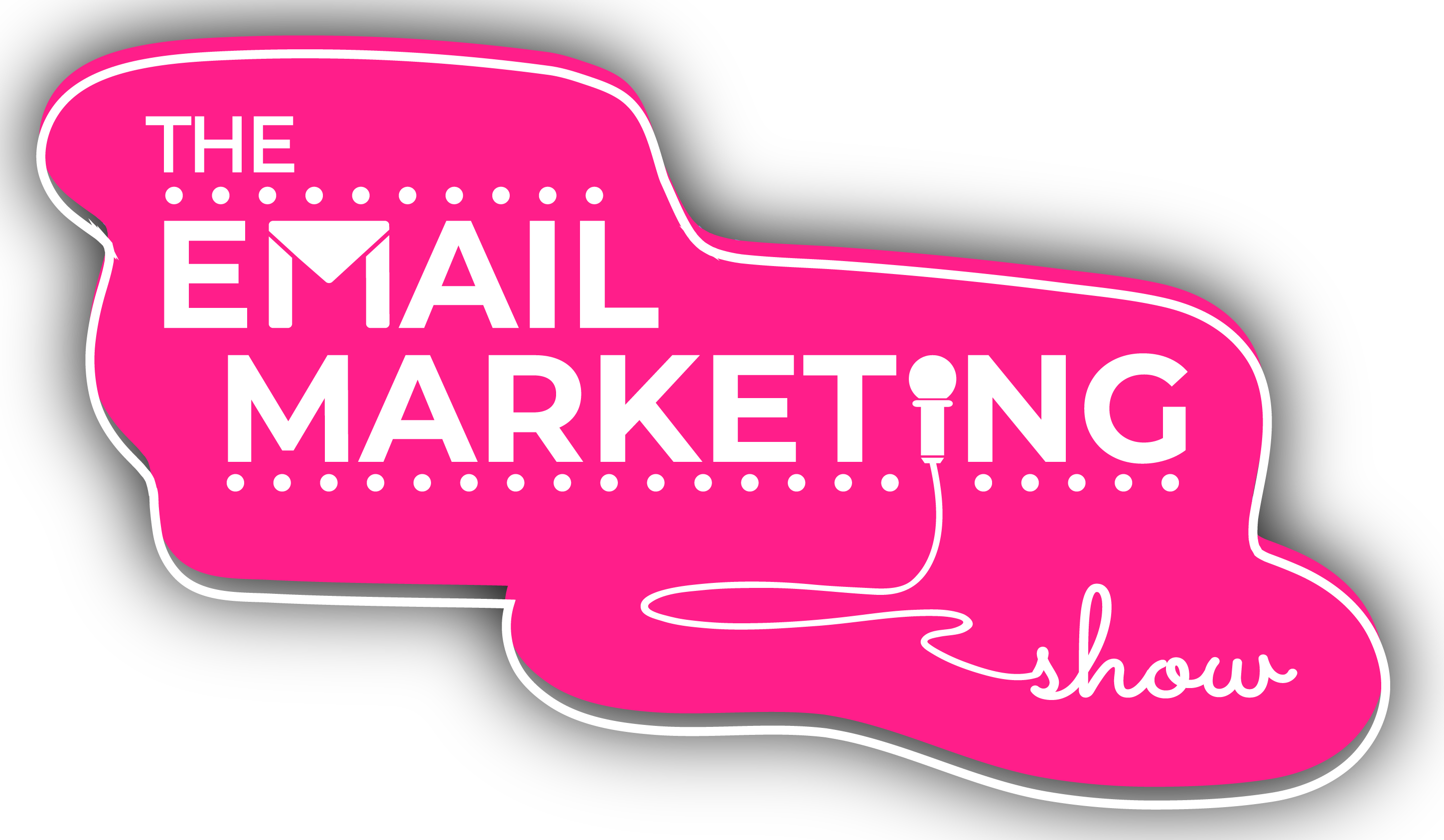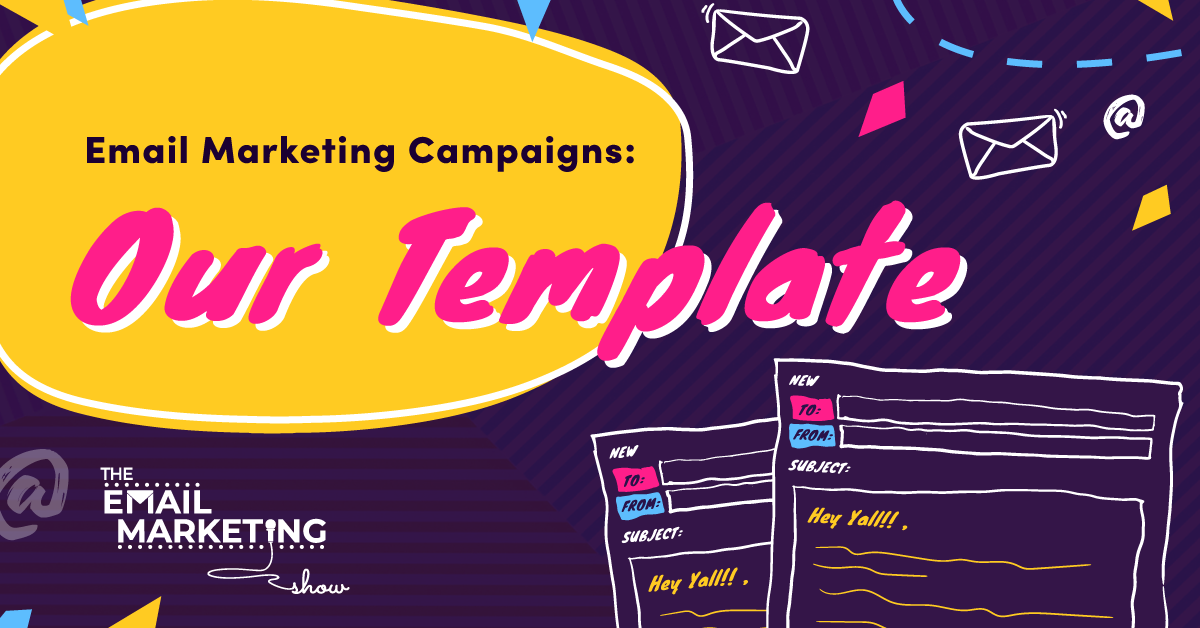
Template For Email Marketing Campaigns
Is there a template for an email marketing campaign that will guarantee you don't keep going around in circles but instead successfully move your readers towards the ultimate goal of buying from you?
Yep, there is.
And it's the one we use in all our email campaigns. Not just the ones we use ourselves, but the ones we teach all our members inside The League.
Ready to find out what it is so you can start using it in all your email campaigns?
SOME EPISODE HIGHLIGHTS: (0:10) Want to make your sales from your email marketing? Grab our Click Tricks. (4:28) Introducing the SVVC formula. (6:50) The Seed phase. (7:36) Throw an idea and let people run with it. (9:34) The Validate phase. (11:20) The Verification phase. (12:53) The Close phase. (13:39) One email campaign = one action. (14:39) Always find fresh ways of using the SVVC formula. (17:04) Subject line of the week.
Want to get more sales from your email marketing?
We put a little something together for you. It's really cool and it's FREE (yes, it's cool and free – we're nice like that). If you want to make more sales from your email marketing, you need more clicks on the things that you're selling!
That's why we're giving you 12 creative ways to help you get more clicks in every email you send. It's a FREE download, and it's called Click Tricks. You can grab it here.
Introducing the SVVC formula
All our email marketing campaigns are different. But they have the same four-part foundational formula at their core. What's worth pointing out is that we're talking about four phases here – not four emails. You could cover these four phases in one email if you wanted. Or write 10 emails out of it.
What's key is that you use all the phases and in this order. So if you ever feel like your email marketing (or even your social media) is not leading anyone in one specific direction, this formula will allow you to move people from one place to the next. Because the ultimate goal is for people to buy from you, right?
So here with go – introducing the SVVC formula.
The Seed (S) phase
The first part of the formula (the S in the acronym) is the Seed phase. This is where you’re going to plant a seed or, in other words, throw down your initial marketing hook.
We usually do this with a short email where we'll just say we're doing something and invite people to go and check out the link. And typically, our hyper responders will be the ones who go and see what it's all about because generally speaking, people are wary of clicking on links ‘blind' (i.e. with no information).
Then maybe in the following email, we'll share a little more information about what they'll find in that link. But in this phase, it's a blind invitation – we're not telling them why the offer is important or what is going to do for them.
Throw an idea and let people run with it
So let's say we're running a 5-day flash sale campaign made up of 8 emails. In the first couple of emails, we'll share very little information. Effectively, we just throw something over and sit back to watch what happens – we share an idea and let people run with it.
Normally, the initial email has one of our highest click-through rates over the course of a campaign because lots of people are intrigued by blind curiosity and find it interesting. But while some people will click to look at the offer and find out more about it, a lot of people won’t. And those who don’t click now will go to the next phase, where we start to unpack things a bit more.
What’s great about any emails in the Seed phase is that they reduce the amount of cognitive load and the mental calories someone needs to read an email. Because a lot of emails are super long, but these initial emails have very little in there – just a few lines of text. They help your subscribers overcome the idea that they need to spend a lot of time seeing what your emails are all about. And this frees up their time a little.
The Validate (V) phase
In the next phase, we pick up the core bits of the offer and back up and unpack what we said at the start. So, for example, if we're talking about a two-day live event we're hosting, we'll share what the outcomes might be for people.
Remember that we didn’t do that in the Seed phase – we didn't say what the offer can do for people, why it's good, what people are getting, or why it's interesting to them. But now we are. Now we are validating someone’s interest.
In the example of our two-day live event, we might say it's about list building. We're not particularly proving anything or saying why it's a good thing – not yet. We’re simply telling people what they’re going to get. We are validating the offer so that when people read the emails, they're getting more information and insight than they did before. Compared to the emails in the Seed phase, where people were going into the link ‘blind', now they have a better idea of what it's all about.
So the Seed phase is curiosity-driven (we're not sharing any benefits in there), and here in the Validate phase, we're giving people the outcome. You'll notice this isn't your traditional marketing approach, which is based on showing the benefit and the story about how the offer came about. Instead, the idea here is to start engaging people and validating the fact that this offer is about something that’s important to them right now.
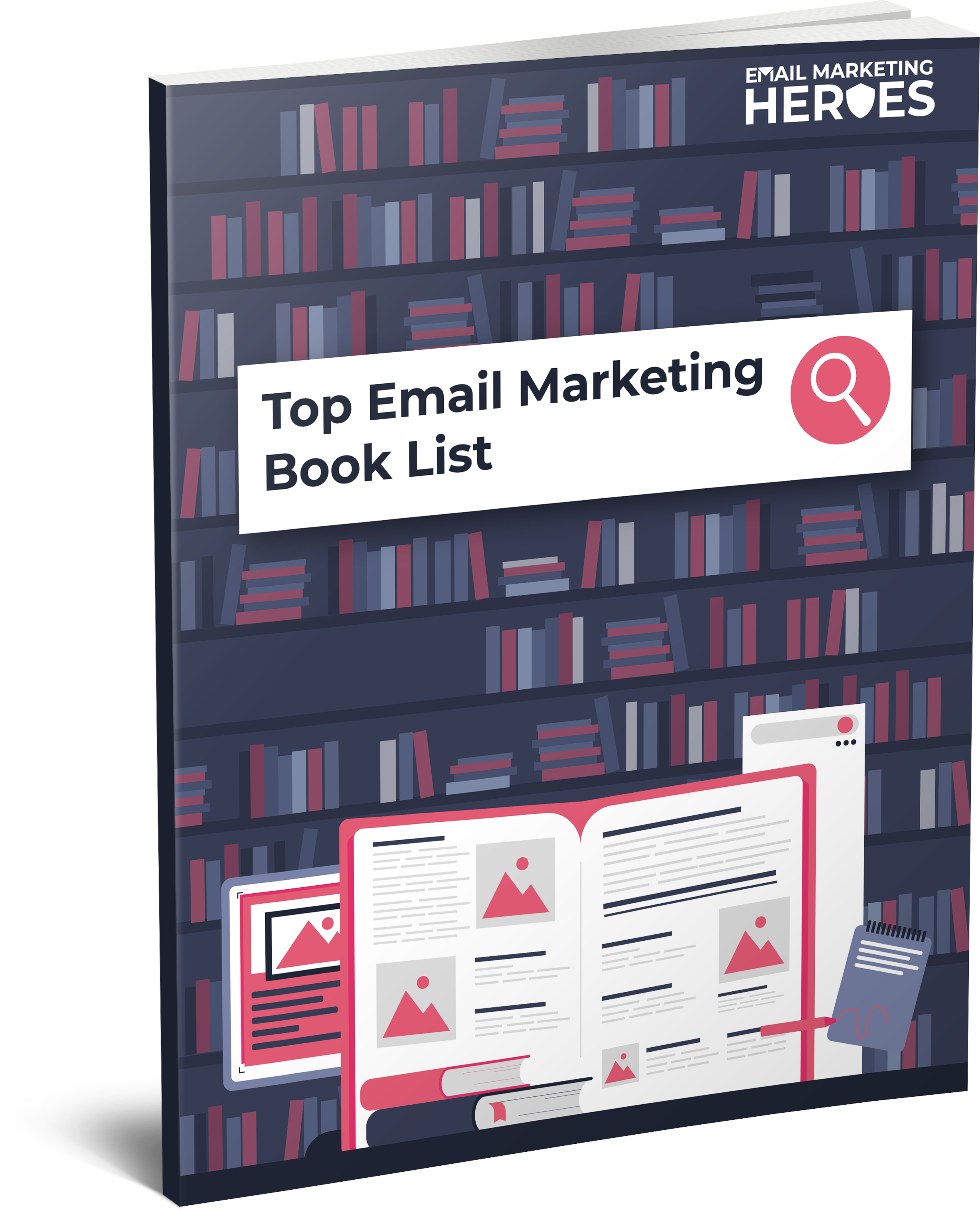
The Top 10 Books To 'Power Up' Your Email Marketing
10 book recommendations that will improve all areas of your email marketing (including some underground treasures that we stumbled upon which have been game-changing for us).
The Verification (V) phase
The second V in the acronym stands for verification. This is where you start to add some proof to your emails. You want to include provable facts behind the claims you’ve made up to this point. So this is where you start using testimonials, case studies, statistics, etc – pull out everything you have that verifies that what you said so far is true. Think about anything that has authority and use it to back up the fact that people should remain interested in this offer.
Also, verify that there is indeed a product. People worry about the great unknown, so remove that fear and tell them what happens after they pay. This is why we'll often include a screenshot, a GIF, a link to a video tour, or something that shows people what happens once they’ve purchased the product.
The Close (C) phase
The final stage is the Close phase. And the emails in this phase are designed to rack up urgency and close the deal. What you’re looking for here is to make sure people can see this is urgent either because there’s a deadline (and the offer is about to expire) or because of a specific reason.
In other words, you want to focus on the fact that the longer they go without your product, the more pain they're going to be in, the bigger the problem is going to be, or the harder it's going to be for them to fix it later. And that’s why they should buy now. So you either want a concrete deadline or a personal deadline, which are the two primary types of urgency we tend to talk about.
One email campaign = one action
During a multi-stage campaign, you will go through all four phases – Seed, Validate, Verify, and Close. If you’re running a summit, for example, you’re going through these phases to help people reach the ultimate goal of registering for it. Then you need a separate campaign to get people from registration to actually attending the event. And if you offer the recordings at a price, that’s another series of emails (again, using the SVVC formula) to encourage people to buy those.
The key thing to remember is that one campaign should have one action you’re trying to encourage people to take. And for each one, you want the SVVC email marketing template sitting underneath to ensure you're progressively moving people towards the ultimate goal of buying from you. The last thing you want is for people to feel that your marketing message isn't leading anywhere, right?
Always find fresh ways of using the SVVC formula
Another important point to remember is that you always want to find fresh ways of following the SVVC formula without saying the same thing all the time. Because when you become predictable, people tend to switch off and not pay attention. And you really need their attention. If you don’t have that, it doesn’t matter what you’re sharing, because they’re not listening – they're not emoting, making decisions, or even considering buying from you. So ensure you’re using this formula in a way that’s fresh every single time.
Plus, using this amazing template helps you avoid falling into the trap of launching your offer and sending just the one email with everything you have to say in it. Because that means you've got nothing left to say. What will you share in your other emails? Repeat yourself and go around in circles? You definitely don't want that. Because that's when the sales argument doesn’t build or progress.
Instead, use the SVVC formula – all the email marketing campaigns we share inside The League are based on this effective template. And this is only some of the science that explains how the campaigns are structured and why they go through multiple phases. If you want to go deeper and take things to the next level, check out our full training on SVVC inside The League.
Subject line of the week
This week’s subject line is “I put THIS in my mouth.” And the funny thing about this is that when you’re sending day-to-day emails (as opposed to email campaigns) you tend to look at them in isolation. You’ll write the email not particularly focusing on what you said yesterday or what you’re going to say tomorrow – you’re just writing today’s email.
And by sheer coincidence, only a few days after Rob sent the email with this subject line, he shared another story in another email with the subject line: “Kennedy put THIS in his mouth?” And in case you’re wondering, people seem to care more about what Rob puts in his mouth because that original subject line had a higher open rate. Funny, ha?
Useful Episode Resources
Related episodes
9 Psychological Things That We Use In All Of Our Campaigns.
The Little-Known Right Order to Make Your Offers (For Maximum Sales).
7 Essential Email Campaigns Examples For Your Business.
FREE list of the top 10 books to improve your email marketing
If you want to write better emails, come up with better content, and move your readers to click and buy, here's how. We put together this list of our Top 10 most highly recommended books that will improve all areas of your email marketing (including some underground treasures that we happened upon, which have been game-changing for us). Grab your FREE list here.
Join our FREE Facebook group
If you want to chat about how you can maximise the value of your email list and make more money from every subscriber, we can help! We know your business is different, so come and hang out in our FREE Facebook group, the Email Marketing Show Community for Course Creators and Coaches. We share a lot of training and resources, and you can talk about what you're up to.
Try ResponseSuite for $1
This week's episode is sponsored by ResponseSuite.com, the survey quiz and application form tool that we created specifically for small businesses like you to integrate with your marketing systems to segment your subscribers and make more sales. Try it out for 14 days for just $1.
Join The League Membership
Not sick of us yet? Every day we hang out in our amazing community of Email Marketing Heroes. We share all of our training and campaigns and a whole bunch of other stuff. If you're looking to learn how to use psychology-driven marketing to level up your email campaigns, come and check out The League Membership. It's the number one place to hang out and grow your email marketing. Best news yet? You can apply everything we talk about in this show.
Subscribe and review The Email Marketing Show podcast
Thanks so much for tuning into the podcast! If you enjoyed this episode (all about the exact template for email marketing campaign that we use in all our awesome campaigns) and love the show, we'd really appreciate you subscribing and leaving us a review of the show on your favourite podcast player.
Not only does it let us know you're out there listening, but your feedback helps us to keep creating the most useful episodes so more awesome people like you can discover the podcast.
And please do tell us! If you don't spend time on email marketing, what do you really fill your working days with? We'd love to know!

